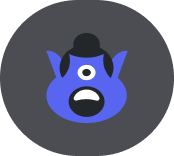Computer Science
Subdecks (1)
Cards (110)
- 1.1.1: What is meant by "context" when planning a new system? The environment in which the system will operate
- 1.1.2: Why is change management needed? It ensures a structured approach to transitioning systems or processes
- 1.1.3: What compatibility issues can arise with legacy systems or business mergers? Conflicting data formats
- 1.1.4: Compare on-premises implementation vs. hosting systems remotely (e.g.
- 1.1.5: What are alternative installation processes? Direct (big bang)
- 1.1.6: What problems may arise during data migration? Data loss
- 1.1.7: What are some types of testing? Alpha
- 1.1.8: Why is user documentation important? It helps users understand and operate the system effectively
- 1.1.9: What are methods of providing user documentation? Printed manuals
- 1.1.10: What are methods of delivering user training? Self-instruction (tutorials/manuals)
- 1.1.11: What are possible causes of data loss? Hardware failure
- 1.1.12: What are the consequences of data loss in a given situation? Loss of productivity
- 1.1.13: How can data loss be prevented? Regular backups (onsite/offsite)
- 1.1.14: What are strategies for managing releases and updates? Version control
- 1.2.1: Define hardware
- 1.2.2: What roles can a computer take in a networked world? Client
- 1.2.3: What are social and ethical issues in a networked world? Privacy
- 4.1.1: How do you identify the procedure to solve a problem? Break the problem into steps
- 4.1.3: What is the role of sub-procedures in problem solving? They break down complex tasks into smaller
- 4.1.4: When is decision-making required in a problem? Whenever there is a need to choose among multiple paths based on conditions or user inputs (e.g.
- 4.1.6: What is the condition in a decision? A Boolean expression or logical statement that evaluates to true or false
- 4.1.8: How do you deduce logical rules for real-world situations? Identify all possible conditions
- 4.1.10: What is pre-planning in problem-solving? Identifying tasks
- D.1.1: What is the general nature of an object in OOP? An entity combining data (attributes) and behaviors (methods) into a single
- D.1.3: What is a UML diagram (in OOP context)? A visual representation of classes
- D.1.4: How do you interpret UML diagrams? Read class names
- D.1.5: What is decomposition in OOP design? Splitting a system into smaller
- D.1.6: What are possible relationships between objects? Association (uses)
- D.1.7: Why reduce dependencies between objects? To create loosely coupled systems that are easier to maintain
- D.1.8: How do you construct related objects for a given problem? Identify classes
- D.1.9: Why do we need different data types? To ensure correct data representation
- D.1.10: How are parameters passed in methods (OOP context)? They are given as inputs (arguments) to a method’s signature
